The application of displays in the medical field not only improves the accuracy of diagnosis and treatment, but also improves the work efficiency of medical staff and the treatment experience of patients. With the continuous development of display technology, the application prospects of displays in medical treatment will be broader.
Medical Imaging:
Radiology: High-resolution monitors are used to display X-rays, CT scans, and MRI images, helping radiologists make accurate diagnoses.
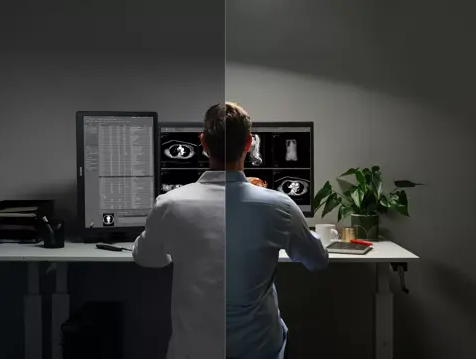
Ultrasound: High-quality displays are used to display ultrasound imaging in real time, helping doctors obtain clear images during diagnosis and surgery.
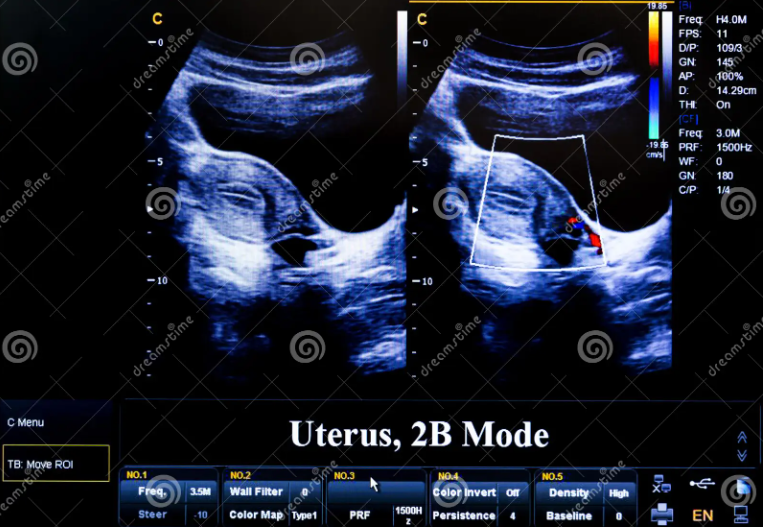
The surgery showed:
Endoscopic surgery: HD monitors are used to display real-time images captured by endoscopic cameras, helping surgeons gain a clear view during minimally invasive surgery.
Robotic surgery: Monitors are used to display real-time images and data from robotic surgery systems, assisting surgeons in performing precision operations.
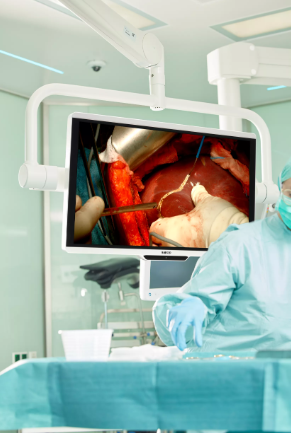
Electronic Medical Records (EMR):
Medical record display: The display is used to display the patient's electronic medical record, examination report and treatment plan, which is convenient for medical staff to check and record patient information.
Multi-screen display: In doctors' offices and wards, multi-screen display systems are used to display the medical records and images of multiple patients at the same time to improve work efficiency.
Vital Signs Monitoring:
The monitor is used to display the patient's electrocardiogram, blood pressure, respiratory rate and other vital signs in real time, helping medical staff to monitor the patient's health status in a timely manner.
Intensive care: In the ICU, the monitor is used to centrally display the data of multiple monitors, which is convenient for medical staff to comprehensively analyze the patient's condition.
Medical Education:The monitors are used to play instructional videos, display anatomical diagrams, and simulate surgical scenarios to help medical students and residents learn and train.
Simulation training:High-resolution displays are used in medical simulation training systems to provide a realistic operating environment and help doctors improve their skills.
Telemedicine:
Remote consultation: The display is used to display the video and image data of the remote consultation in real time, helping doctors to make cross-regional diagnoses and treatment recommendations.
Patient monitoring: In telemedicine, the display is used to display the monitoring data and images of remote patients, which facilitates doctors to conduct remote monitoring and guidance.
Digital imaging systems (PACS, DR, CR, DSA, etc.) have become increasingly mature with the development of science and technology and have quickly entered the field of medical radiology. Due to its soft reading function and forward-looking nature, it has become increasingly popular among domestic hospitals, and various medical digital imaging systems have been included in the hospital's purchase plan. However, due to cost considerations, the configuration of digital imaging systems in terms of displays often ignores or abandons the configuration of medical displays, and uses ordinary PC monitors or black and white monitors instead, which greatly reduces the image display effect of digital imaging systems and has become a "bottleneck" in the current development of digital imaging in my country.
Parameters that need attention for medical displays
1. Brightness
The maximum brightness of medical screens is designed and manufactured to be 800-600cd/M2. The brightness of standard screens is 200-350cd/M2. The American College of Radiology (ACR) stipulates that the maximum brightness of digital X-ray images must be at least 170cd/M2. At the X-ray Imaging Seminar held in Germany in March 2001, the industry's view was that the screen using digital images should have a brightness of at least 200cd/M2. Generally, perspective or CT images should have a brightness of at least 100cd/M2. From this point of view, the brightness of ordinary turntables has reached the brightness required for reading films (when many hospitals first installed them).
We hope that the brightness of the display can be maintained above the minimum required brightness for at least three years, so it is recommended that the brightness of new displays should be at least 500cd/M2. However, since ordinary displays do not have brightness stabilization and correction functions, the brightness decays over time and the refraction of ambient light, the display brightness is greatly discounted and cannot truly meet the requirements of film reading. After the maximum brightness of medical displays is installed, they are corrected according to the DICOM standard using optical correction methods to keep the brightness at a brightness value required for film reading. (generally between 400-500cd/m2) and guaranteed to remain constant for 30,000-50,000 hours. This ensures the stability of brightness and the consistency of images. From this point of view, the actual functions of ordinary monitors and medical monitors in the working environment of the medical radiology reading room are very different.
The brightness of the medical display screen provided by Hot Display is sufficient to support various medical devices. The brightness can reach more than 100cd/m2.
10.1-inch color LCD display / IPS full viewing angle / 1280x800 dot matrix / touch screen / LVDS / high brightness sunlight readable
▶ Model: TFT-H101D13W XIWZKN40
▶ Type: TFT LCD color screen
▶ Display pixels: 1280x800 Px
▶ Dimensions (mm): 229.46x149.1x4.7
▶ Display inches: 10.1"
▶ Effective size (mm): 216.96x135.6
▶ Viewing angle: IPS full viewing angle
▶ Brightness: 1000cd/M2
▶ Pin: FPC-40PIN
▶ Interface: LVDS
▶ Special instructions: Anti-static ESD 8KV
▶ Operating temperature: -20~70℃
▶ Power supply voltage: 3.3V
▶ Driver chip: TBD
Hot Display has a complete range of products. You can choose a medical device display screen with suitable brightness according to actual requirements. For more resolution medical displays, please visit Hot Display's official website:https://www.display-lcd.com/
2. Grayscale
Grayscale refers to the level of display that can be displayed from the brightest value to the darkest value on the display of the monitor. Grayscale is an important parameter for truly displaying the patient's lesions in medical images. Only with more grayscale levels can a higher reading quality be guaranteed. Ordinary monitors have 8-bit--256-bit grayscale, which is used to display color images; medical monitors have 10-bit-1024-bit grayscale, which is used to display X-ray grayscale images, which are related to diagnosis.
The human eye's response to grayscale is not a linear relationship. Our eyes are not as sensitive to dark parts as bright parts. A good medical monitor with a higher brightness display system can display more resolvable grayscale numbers (JND).
To achieve perfect reproduction of grayscale continuous black and white images, you should choose a professional graphics card with an output grayscale of more than 10 bits.
3. Resolution
Resolution refers to the number of pixels displayed per unit area, and the cost of the display is proportional to the resolution. For example, a resolution of 1024×768 is suitable for office text. However, when displaying high-resolution images through software processing at low resolution, the content of the display screen needs to be changed. However, this way of changing the display content will inevitably lead to "distortion" of the image. In this way, the basic requirements for medical image display are also changed. Therefore, from the perspective of resolution alone, not only medical displays should be selected, but also different resolutions should be selected according to different systems.
The resolution of the display should match the resolution of the imaging device. The resolution of the display should be close to the resolution of the imaging device. If the resolution of the display is too high, too much false information will affect the diagnosis (mosaic effect); if the resolution of the display is too low, information loss will affect the diagnosis.
12.1 inch 800x600 pixel TN TFT LCD display for ventilator
▶ Model: TFT- H121E01SVTWZ4N20
▶ Type: TFT LCD color screen
▶ Display content: 800x600 PX
▶ Dimensions (mm): 276x 209 x 9.1
▶ AA size (mm): 246.00x184.50
▶ Product application: ventilator, monitor
▶ Viewing angle: 6H
▶ Brightness: 400cd/m2
▶ Pin: FPC-26PIN
▶ Interface mode: LVDS
▶ Special instructions: Anti-static ESD 8KV
▶ Working temperature: -20~70℃
▶ Power supply voltage: 3.3V
Hot Display has a complete range of products. You can choose a medical device display screen with a suitable resolution (1920x1080, 800X600, 1280x800, 1440x540, etc.) according to actual requirements. For more resolution medical displays, please visit the official website of Hot Display:
4. Response time
Response time refers to the speed at which the LCD monitor responds to the input signal, that is, the time it takes for the LCD to turn from bright to dark. It is usually calculated in milliseconds (ms). The display time of each picture needs to be less than 40ms. According to the actual use of the LCD, the response time is 30ms (1/0.03=33.3 frames/second), and there will still be a tailing phenomenon, which is not suitable for real-time playback of dynamic medical images. The response time is below 25ms (1/0.025=40 frames/second) to meet the real-time playback of clinical cardiovascular DSA.
In the selection of medical monitors, CR and DR static images do not have high requirements for response time. However, when configuring the system for playing dynamic images, such as cardiovascular machines and digital gastrointestinal machines, medical monitors with a response time of less than 25ms should be preferred.
5. Display size
The size of medical displays is related to resolution. The higher the resolution, the larger the size, but the relationship is not proportional. The size of professional medical displays can be customized.
8.0 inch TFT color LCD screen 800x600 pixels IPS resistive touch screen
▶ Model: TFT-H080E09SVTHX2R50
▶ Type: TFT LCD resistive screen
▶ Display content: 800x600 PX
▶ Dimensions (mm): 183x141x7.25
▶ AA size (mm): 162x121.5
▶ Product application: medical, home appliances, industrial control
▶ View: full viewing angle
▶ Brightness: 280cd/m2
▶ Number of PINs: FPC-50PIN
▶ Touch: capacitive touch screen
▶ Interface mode: TTL 24-bit
▶ Special instructions: anti-static ESD 8KV
▶ Working temperature: -20~70℃
▶ Power supply voltage: 3.3V
▶ Driver chip: HX8264+HX8696
Hot Display has a complete range of products. You can choose the appropriate size of medical device display according to your actual requirements. For more resolution medical displays, please visit Hot Display's official website:https://www.display-lcd.com/
6. Horizontal and vertical screen
There is no standard or regulation on whether to choose a horizontal or vertical screen display. Radiological images can be horizontal or vertical, so it depends on the image. Therefore, it is best to choose a medical display that can be adjusted horizontally or vertically.
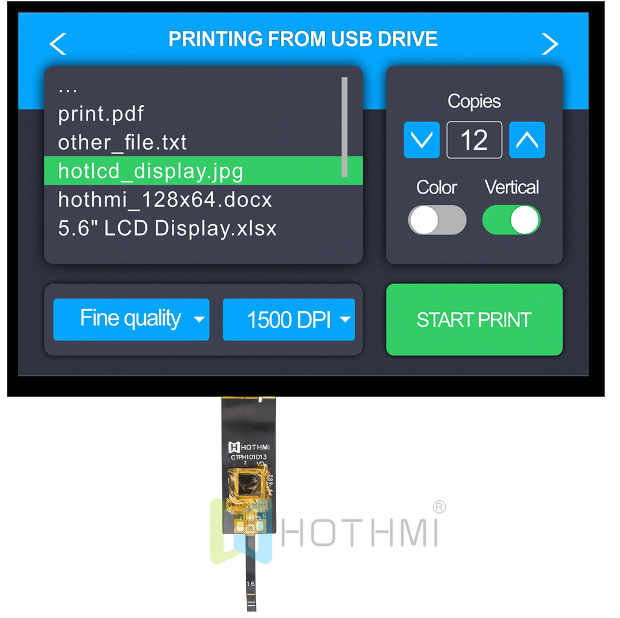
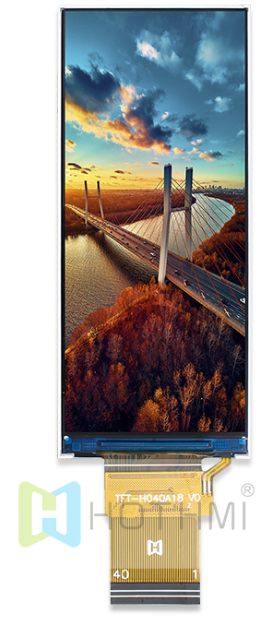
Performance assurance of medical displays
stability
The general definition of the life of a display is the time when the brightness decays to 50% of the maximum brightness. For LCD displays, this time is about 30,000 hours to 50,000 hours. The brightness of LCD displays is not very stable and its brightness will change with different temperatures. Therefore, the display must be calibrated for brightness and grayscale every once in a while (about three to six months) to ensure the consistency of the display. Medical displays have sensors inside that can detect changes in the brightness of the display and automatically adjust so that the display can maintain stable brightness at any time during its service life.
In addition, when a general display is just turned on, the brightness will not immediately reach the set brightness. During this period of time when the brightness does not reach the set mark, the display is not suitable for diagnosis.
Integrity and consistency
Consistency and integrityConsistency means that after a period of time, the display quality of the same image remains the same, just like looking at the same film.
Integrity means that the brightness, grayscale, contrast, etc. of the same image displayed on workstations in different locations in the hospital are exactly the same.
Technology and brand protection
There are a wide variety of monitors on the market, and high-quality medical display products can more effectively assist medical workers. Therefore, it is particularly important to choose a professional medical monitor that has both technical and brand guarantees. Hot Display has independent R&D technology accumulation. At the same time, worry-free warranty and after-sales service will also provide a solid foundation for the quality assurance of the monitor.
For more information, please contact us directly!